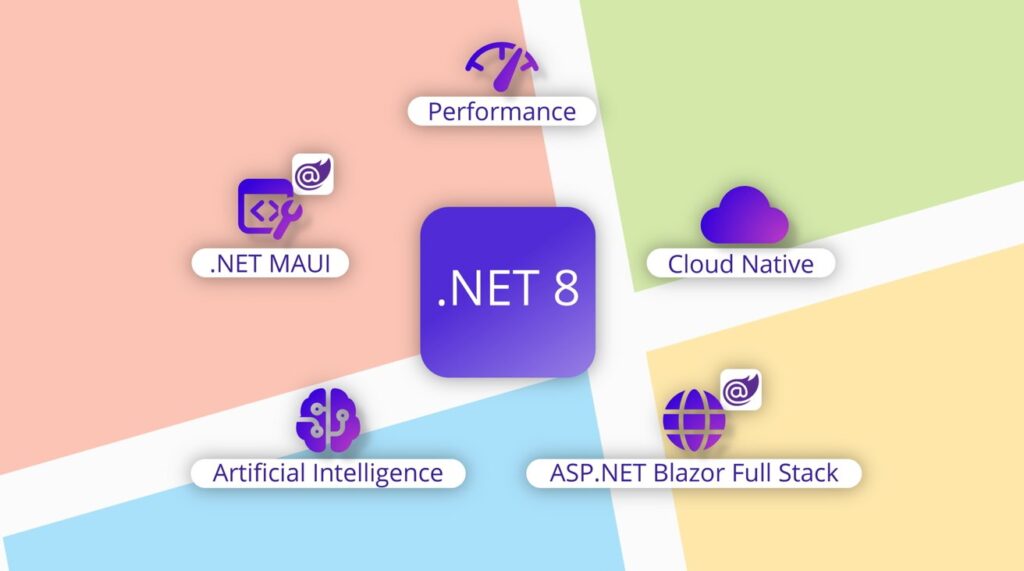
.NET 8: Native AOT for ASP.NET Core
Illustration of a rocket launch, symbolizing faster startup times and smaller memory footprint with Native AOT in .NET 8, highlighted by the best .NET Core course in Kerala and the best .NET Core institute in Kochi.
Among the many updates in .NET 8, one key feature for developers is Native AOT (Ahead-of-Time compilation) in ASP.NET Core. If you are learning at the best .NET Core academy in Kerala or training at the best .NET Core institute in Kochi, this feature can significantly impact your real-world projects and cloud-native applications.
1. What is Native AOT?
Traditionally, .NET applications rely on Just-In-Time (JIT) compilation, where code is converted into machine instructions only when it runs. This method works well, but it adds extra startup time and requires the .NET runtime on the machine.
With Native AOT, applications are compiled ahead of time into a fully native executable. This executable includes everything needed to run the app; no runtime dependency is required.
2. Why Native AOT Matters
Native AOT offers several important benefits:
- Faster Startup: Applications launch instantly, which is crucial for microservices, APIs, and serverless functions.
- Lower Memory Usage: By removing runtime overhead, apps consume fewer resources.
- Cloud & Container Friendly: Smaller binaries and quicker cold starts make it ideal for containerized deployments.
- Simpler Deployment: Apps are self-contained, so you don’t have to worry about runtime versions on servers.
3. Impact for Developers
For most developers, the transition is smooth:
- No major code changes are needed; Native AOT works with existing ASP.NET Core apps.
- Get immediate performance gains with quicker response times and lighter memory usage.
- It is best suited for APIs, microservices, and lightweight services.
- One thing to note: some dynamic features like reflection are limited under AOT, so developers should confirm library compatibility.
If you’re studying at the best .NET Core institute in Kochi, you’ll learn how to manage these limitations effectively in real-world projects.
4. Real-World Benefits
Microsoft’s internal benchmarks show up to 24% performance improvement compared to previous versions. For businesses, this means:
- Lower infrastructure costs.
- Faster response under heavy traffic.
- The ability to host more services on the same server.
In short, Native AOT isn’t just about speed; it’s about efficiency and scalability.
5. What Developers Should Do
If you’re working with ASP.NET Core APIs or planning cloud-native applications:
- Explore Native AOT for new microservice projects.
- Review your dependencies to ensure AOT compatibility.
- Consider AOT when deploying apps in containers, serverless environments, or high-performance scenarios.
Students at the best .NET Core institute in Kochi get hands-on experience in implementing these strategies through guided projects and real deployment practice.
Final Thought:
Native AOT in .NET 8 is one of the most exciting advancements for ASP.NET Core. By combining speed, smaller footprint, and cloud readiness, it empowers developers to build apps that are not only fast but also cost-effective to run. For students and professionals learning .NET Core in Kerala, especially those training at the best .NET Core institute in Kochi, mastering Native AOT will open doors to the future of modern, high-performance development.
Join Aitrich’s Full Stack .NET Core program in Thrissur or Kochi Infopark and start building your future today.












